
английский язык для общих целей
.pdf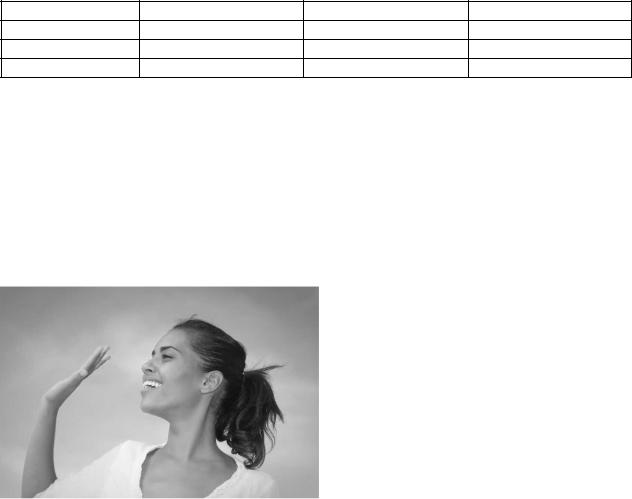
meet someone again after a long time. Just as with greetings, the language of introduction is different in different situations too.
In official situations you should use the following expressions:
'Let me intro'duce , Mr . Brown/Kate/ myself, etc. 'May I intro'duce ,Mr ,Brown/Kate/myself, etc.?
The usual response to an introduction is 'How do you 'do? which is in fact a sort of greeting. And in reply the other person says: 'How do you 'do?:
However when introducing friends or people of the same I age you should use the following expressions: This is..., | Meet...:
For example:
Hostess: Helen, meet my friend Kate. Helen: Hello, Kate. Pleased to meet you. Kate: Hello, Helen. So am I.
Mind the following:
If you have some knowledge of the person you are being introduced to, you may add: "Hello, Kate. I've heard a lot about you".
If you have already met Kate at some time, you may say: "How are you, Kate?". In reply Kate may say: "Fine/well/pretty well, thanks. And how are 'you?".
Don't forget that men are introduced to women unless they are much older and more senior. Young men are introduced to older men and young girls to older women.
(From Плюхина, З.А. Англичане говорят так. – М. Инфра-М, 1995. – 208 с.)
2. Write out all the phrases dealing with greetings and introductions. Fill in the table
Greetings |
Introductions |
Answers |
Informal
Less formal
Formal
Do you know how to say good-bye?
Informal |
Less formal |
|
Formal |
'Hope to 'see you again |
'Nice .meeting you |
|
It's been 'nice .meeting you |
|
|
|
|
'See you .later |
|
|
'Good-,bye! |
'See you .then |
|
|
|
'See you |
|
|
|
'Good-,bye! |
|
|
|
Learn more |
Read the text, point out how to say good- |
||
|
|||
|
bye, complete the table with the expres- |
||
|
sions from the text. |
||
|
English speakers like a lot of variety in their |
||
|
everyday language. We have lots of different |
||
|
expressions for saying simple things. |
||
|
Formal goodbyes |
||
|
|
• Goodbye. "Goodbye" itself is actually |
|
|
|
one of the most formal ways to say |
|
|
|
goodbye to someone. Here are some |
|
|
|
situations in which "Goodbye" is ap- |
|
|
|
propriate: |
|
10
You've broken up with your partner. You're sad about it. You think that you may never see this person again.
You're angry with a family member. You say this as you slam the door or hang up the phone.
•Farewell. This phrase is quite formal and very emotional-sounding. It also seems very final. It's the type of thing that two lovers in a movie might say if they're never going to see each other again. You probably won't use it often in daily life.
•Have a good day. Say "Have a good day" (or "Have a nice day," "Have a good evening," or "Have a good night") to someone that you're not very close with, like a coworker that you don't know well, an employee, a customer, or a friend of a friend.
•Take care. This phrase is still a little bit formal, but not quite as formal as "Have a good day." Use this when you're not going to see someone again for at least a week.
Casual goodbyes
Most of the time, we use one of these casual phrases when saying goodbye to someone in English.
•'Bye! “Bye” is the most common way to say goodbye in English. You can say "'Bye" to anyone you know, from friends to coworkers to clients. It's common to say "'Bye" at the very end of a conversation, even after you've said some of the other phrases in this list.
For example:
A: See you later.
B: OK, have a good one. A: You too. 'Bye.
B: 'Bye.
•Bye bye! Little children say "Bye bye", and adults say it when speaking to children. When adults use "Bye bye" with each other, it can either sound childish or sometimes flirtatious.
•Later! "Later!" is a cool, casual way to say goodbye. Men often use "Later!" when speaking with each other. You often follow "Later!" with something like "man", "bro", "dude", or "dear".
Later, man.
•See you later. / Talk to you later. "See you later is not quite as casual as "Later!". You can use it with almost anyone. You say "See you later" when you're saying goodbye to someone in person. When you're talking to someone on the phone, you can say "Talk to you later" instead.
•Have a good one. "Have a good one" means "Have a good day" or "Have a good week." You sound relaxed and friendly when you use it. However, there are people who get annoyed by it because they think that "Have a good day" is better.
•So long. "So long" isn't very common for actually saying "goodbye" to someone, but you may find it sometimes in news headlines and other places.
•All right then. This isn't a very common phrase, but some people in the Southern part of the U.S. use it. It's very casual, relaxed, and colloquial.
(From http://www.phrasemix.com/collections/15-ways-to-say-goodbye-in-english)
3.Read the texts above once again and discuss the following:
How do the British / the Russians usually greet / say good-bye to each other ? What are the most common forms of greetings?
What are the major differences in the forms of greetings and communicative behavior in different countries (Great Britain, USA, Russia)
11
4. Match the opening phrases in A column with the responses in B column.
|
A |
|
B |
|
|
|
|
1) |
Hello, John. How’s it going? |
a) |
Fine thank you. And what about you? |
2) |
Miss Smith, I’d like to introduce to you |
b) |
All right , thank you/ |
|
Mr Brown. |
|
|
3) |
Sally, this is Jane. |
c) |
Hello, Jane. Pleased to meet you |
4) |
Do you know George? |
d) |
Good morning, Mrs Baker. It was very kind |
|
|
|
of you to invite me. |
5) |
How do you do? |
e) |
No, I don’t believe I have. |
6) |
I don’t believe you’ve met Miss Baker, |
f) |
Hello, Pete. It’s nice to see you again. |
|
have you? |
|
|
7) |
Good morning, Mrs Smith. I’m so |
g) |
How do you do, Miss Smith? |
|
pleased you could come. |
|
|
8) |
How are you doing? |
h) |
No, I can’t say I do. |
9) |
Let me introduce myself. My name |
i) |
How do you do? |
|
is…. |
|
|
10)This is Professor Norbert Berger from |
j) |
Nice/Glad/Pleased to meet you |
|
|
Exeter.. |
|
|
Speaking
1. Practice this dialogue in groups. Use your real names.
A:Good afternoon!
B:Good afternoon! My name is _____(b)________.
A:Hello. My name is ____(a)________.
B:Have we met before?
A:No we haven’t met. Pleased to meet you!
B:Pleased to meet you too. Have you met ______(c)______?
A:I’m not sure.
C:Yes, we have met before. Good to see you again!
A:Oh yes, I remember now. Good to see you again too!
C:How are you doing?
A:I’m not too good today.
C:I’m sorry to hear that.
A:And what about you?
C:Oh, I’m fine.
B:I have an idea. Let’s go and get some lunch!
2.Introduce your partner to the people in the class. Ask and answer questions with a partner.
1)Where …… …….come from?
2)Where … live?
3).... your family small/large?.
4)… have any brothers or sisters?
5)What … like doing at the weekend?
6)What …..you good at?
7)Where … go for your last holiday?
8)Where ……you study before?
12
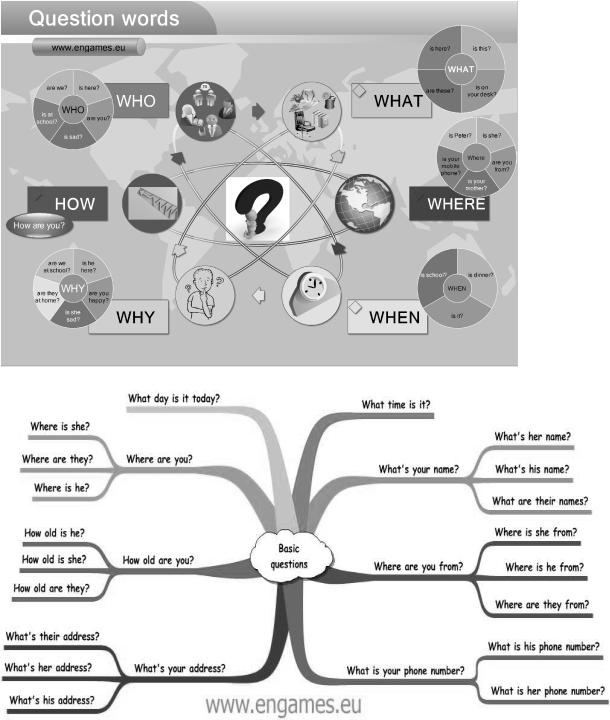
Team work.
Use the mind-maps below to learn more about your group mates
Self study. To learn more about greeting and introductions go to http://www.bbc.co.uk/worldservice/learningenglish/radio/specials/1142_greeting/index.shtml http://www.esolcourses.com/uk-english/beginners-course/unit-1/personal- information/introductions-greetings.html
Role play.
Student A. You are at a party. You don’t know anybody here. Ask the host to introduce you to the guests.
Student B. You are the host. You introduce student A to other guests.
13

Grammar spot
1. Study the table below. Go to Grammar Focus. Study the theory in detail. Find the examples of various parts of speech in the texts above.
Часть речи |
Функция |
Пример/слова |
Пример/предложение |
||
|
|
|
|
|
|
Noun (n)- |
Обозначает предмет, |
Language, greet- |
I’m a student at Chelya- |
||
существительное |
лицо или явление |
ing, introduction, |
binsk State University |
||
|
|
student, lecturer, |
|
|
|
|
|
faculty, Chelya- |
|
|
|
|
|
binsk |
|
|
|
Verb (v)- глагол |
Обозначает действие |
Be, have, study, |
I can speak several lan- |
||
|
или состояние |
introduce, greet, |
guages. I am rather good at |
||
|
|
speak |
English. |
||
|
|
|
The more languages you |
||
|
|
|
know, the more you are |
||
|
|
|
human. |
||
Adjective (adj) - |
обозначает качество |
Possible, interna- |
English is a language in- |
||
прилагательное |
предмета, лица или |
tional, helpful, |
ternational communica- |
||
|
явления |
ceaseless. |
tion. |
||
|
|
|
English is an excellent |
||
|
|
|
language to learn |
||
|
|
|
Reading is an important |
||
|
|
|
part of learning a new lan- |
||
|
|
|
guage |
||
Pronoun (pro) - |
Заменяют существи- |
I,we, he, she, |
If you want to build your |
||
местоимение |
тельные и другие |
you, what, this, |
vocabulary learn several |
||
|
части речи |
someone etc |
words a day. |
||
|
|
|
Some people have difficul- |
||
|
|
|
ties in reading , other in |
||
|
|
|
listening and comprehen- |
||
|
|
|
sion |
||
Adverb –(adv) - |
Обозначает качество |
Often, seldom, |
You can learn a language |
||
наречие |
действия |
quickly, well, |
quickly. Read and speak |
||
|
|
successfully |
in English regularly |
||
Numeral (num) - |
Обозначает количе- |
Two, twelve, |
Many people speak three |
||
числительное – |
ство |
twenty, hundred, |
or more languages quite |
||
|
|
the second |
fluently. |
||
Conjunction |
Служебная часть ре- |
and, but, or, |
Watch, listen, read and |
||
(conj)- союз |
чи, соединят слова и |
therefore, then, |
write in your chosen lan- |
||
|
предложения |
that |
guage. |
||
Article -артикль |
Служебная часть ре- |
a/an, the |
A student who works hard |
||
– |
чи, определитель |
|
can achieve very much. |
||
|
существительного |
|
|
|
|
Preposition (prep) |
Служебная часть ре- |
in, on, at, near, |
Learn a few greeting |
||
-предлог. |
чи, устанавливают |
by, before |
words in the language be- |
||
|
связи между словами |
|
|
|
learn the alphabet |
|
|
fore you |
|||
|
(членами предложе- |
|
|
|
|
|
ния) |
|
|
|
|
14
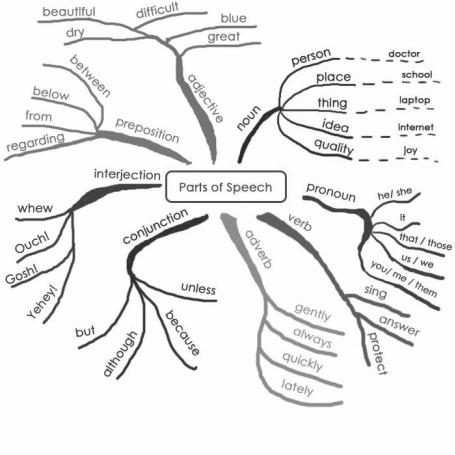
Междометие – |
Служит для выраже- |
ah, wow, oops, |
Well done! |
Interjection (inter) |
ния эмоций, но прямо |
hey |
|
|
их не называет. |
|
|
2. Study the mind map. Add your own examples.
3.Go to Grammar Focus. Study basic tense forms in Active Voice. You may also visit http://www.ego4u.com/en/cram-up/grammar, http://www.study.ru/support/handbook/verb2.html
4.Learn more at http://www.grammar-quizzes.com/prestensum.html
5.You may watch a video about the English tenses at http://video.about.com/esl/Learn-ESL- -What-Are-the-Tenses-in-English-.htm
15
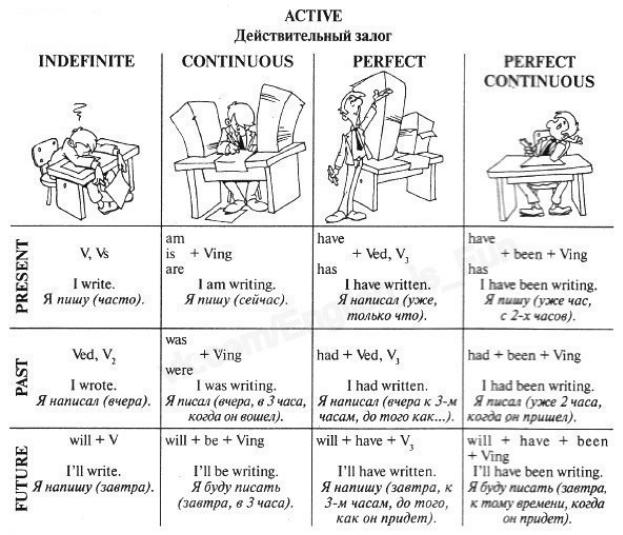
Grammar spot
1.Find examples of present, past, and future tenses in the texts above.
2.Which tenses are the two verb forms in these sentences?
What is the difference between them?
He lives with his parents.
She’s living with an English family for a month.
3.Choose the correct verb form.
1)Maria comes / is coming from Chile.
2)She speaks / is speaking Spanish and English.
3)Today Tom wears / is wearing jeans and T-shirt.
4)Are you liking / Do you like black coffee?
5)Last year she went / goes on holiday to Florida.
6)Next year she studies / is going to study at university.
Writing
Write a paragraph about yourself. Use the texts to help you.
Go to http://www.wikihow.com/Find-a-Penpal. Study how to find a pen pal. Make your profile.
Project work
Surf the Internet to find out how people greet each other in different cultures. Make up presentations.
16
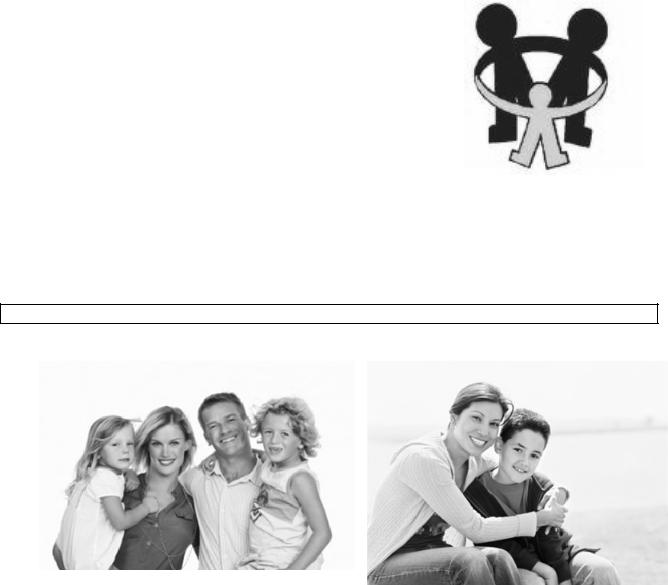
Unit 2. Family
2.1. Patterns of Family Life
“All happy families resemble one another: every unhappy family is its own fashion.” (Leo Tolstoy)
Lead-in
What is a family? What associations do you have?
Paraphrase the quotation by Leo Tolstoy. Do you agree with it? Discuss, give reasons.
What is an ideal family as you see it?
Do you agree that the word family stands for:
F—Forget
A—About
M—Me
I—-I
L—Love
Y-You
(http://learning.blogs.nytimes.com/2011/02/24/how-do-you-define-family/#comment-145036)
Vocabulary
1. Families are divided into several types. Match the pictures with 1-3 with the phrases in the box:
a) nuclear family b) extended family c) single-parent family
1) |
2) |
17
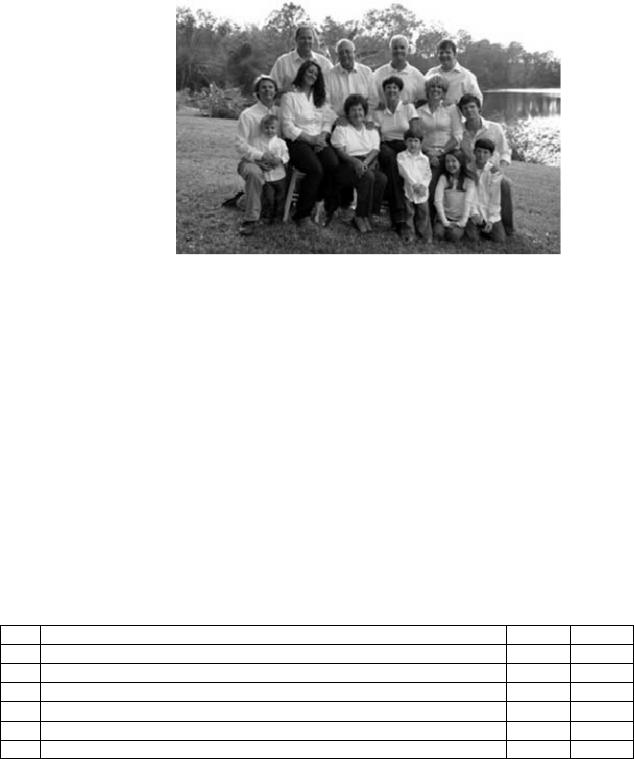
3)
Listening and reading (from Upload 3, Student’s Book by Virginia Evans & Jenny Doo-
ley)
1.Listen to the dialogue. What is about?
Sue: Hi, Jane! What are you doing?
Jane: Hi, Sue. I’m looking through this album of old family photos my mum just sent me. Some of them really bring back memories.
Sue: That’s interesting! Can I have a look?
Jane: Of course. Let’s see if you can recognize me in this photo! My mum took it when I was about eight, I think. Now, which one is me?
Sue: I think, this is you, in the middle. Is that your gradma behind you?
Jane: You ‘re right and that’s my granddad, standing behind her. My parents are on the left. The girl in front of my mum is my sister, Lisa. The ones on the right are my mum’s twin sister, her husband and my cousin, Billy. He’s so funny. We all lived in the small town.
Sue: Well, you all look happy. Anyway, I’ll look at the rest later. I have a lecture now. Jane: Okay, see you.
2.Read the dialogue and decide whether the statements are T(true) or F(false).
|
T |
F |
1 |
Jane is looking at some photographs. |
|
2 |
The photo shows Jane as a child. |
|
3 |
Jane has two sisters. |
|
4 |
Jane’s mum has a brother. |
|
5 |
Sue lived on a farm as a child |
|
6 |
Jane is going to a lecture |
|
Reading
Before reading the text try to answer the following questions.
What is the difference between a modern family and the family of the past?
What types of modern family do you know? Which of them do you prefer/accept/approve?
1.Read the following statements and say if you agree or disagree with them.
•Family is often the source of our problems and anxieties.
•There are two general types of family: the nuclear family and the extended family.
18
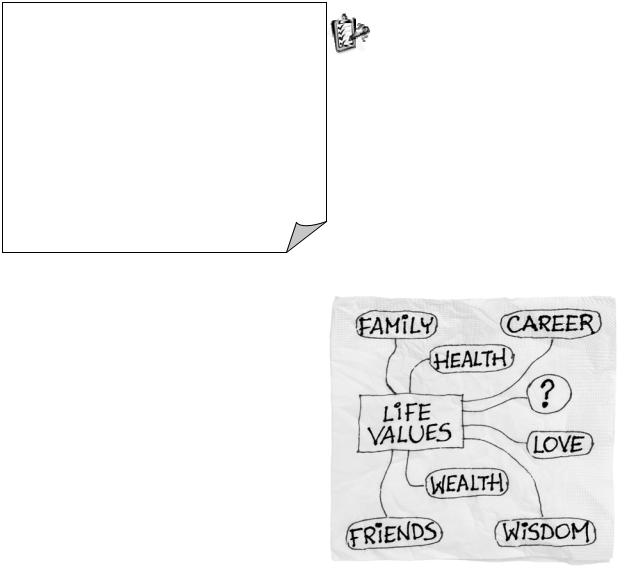
•The family unit is in crisis now and traditional family life is a thing of the past.
•Other types of family (e.g. single parent household, homosexual families, etc.) are as good as traditional (nuclear family).
2.Skim the text and check and make sure that you have guessed right.
Here are four different kinds of reading.
• Skimming - running the eyes over quickly, Improve your study skills to get the gist
•Scanning - looking for a particular piece of information
•Extensive reading - longer texts for pleasure and needing global understanding
•Intensive reading - shorter texts, extracting specific information, accurate reading for detail.( http://www.learningtolearn.group.shef.ac.uk
/read/read difkind task.html
There are many different views on family life. Some people could not do without the support and love of their families. Others say it is the
source of most of our problems and anxieties. Whatever the truth is, the family is definitely a powerful symbol. Turn to the television or open a magazine and you will see advertisements featuring happy, balanced families. Politicians often try to win votes by standing for “family values”: respect for parental authority, stability in marriage, chastity and care for the elderly.
Sociologists divide families into two general types: the nuclear family and the extended family, which may include three or more generations living together. In industrialized countries, and increasingly in the large cities of developing countries, the nuclear family is regarded as normal. Most people think of it as
consisting of two parents and two children. In fact, the number of households containing a nuclear family is shrinking year by year.
There are people who say that the family unit in most countries is in the crisis and that traditional family life is a thing of the past. This is of great concern to those who think a healthy society is dependent upon a stable family life. They see many indications that the family is in decline, in such things as the acceptance of sex before marriage, the increased number of one-parent families, the current high divorce rate and what they see as a lack of discipline within the family.
There is a definition of a “normal family”. Broadly speaking, the family is a group of people related by blood or law, living together or associating with one another for a common purpose. That purpose is usually to provide shelter and food, and to bring up children. The nature of the family keeps changing; there are a number of types of family that exists in a society at any one time.
3.Read the text again and answer the following questions:
1)What is the most general view on family life?
19
